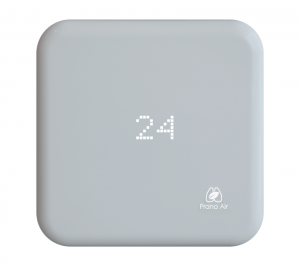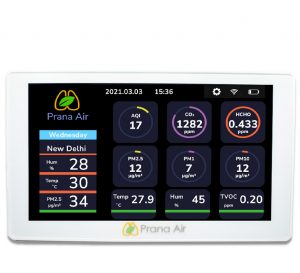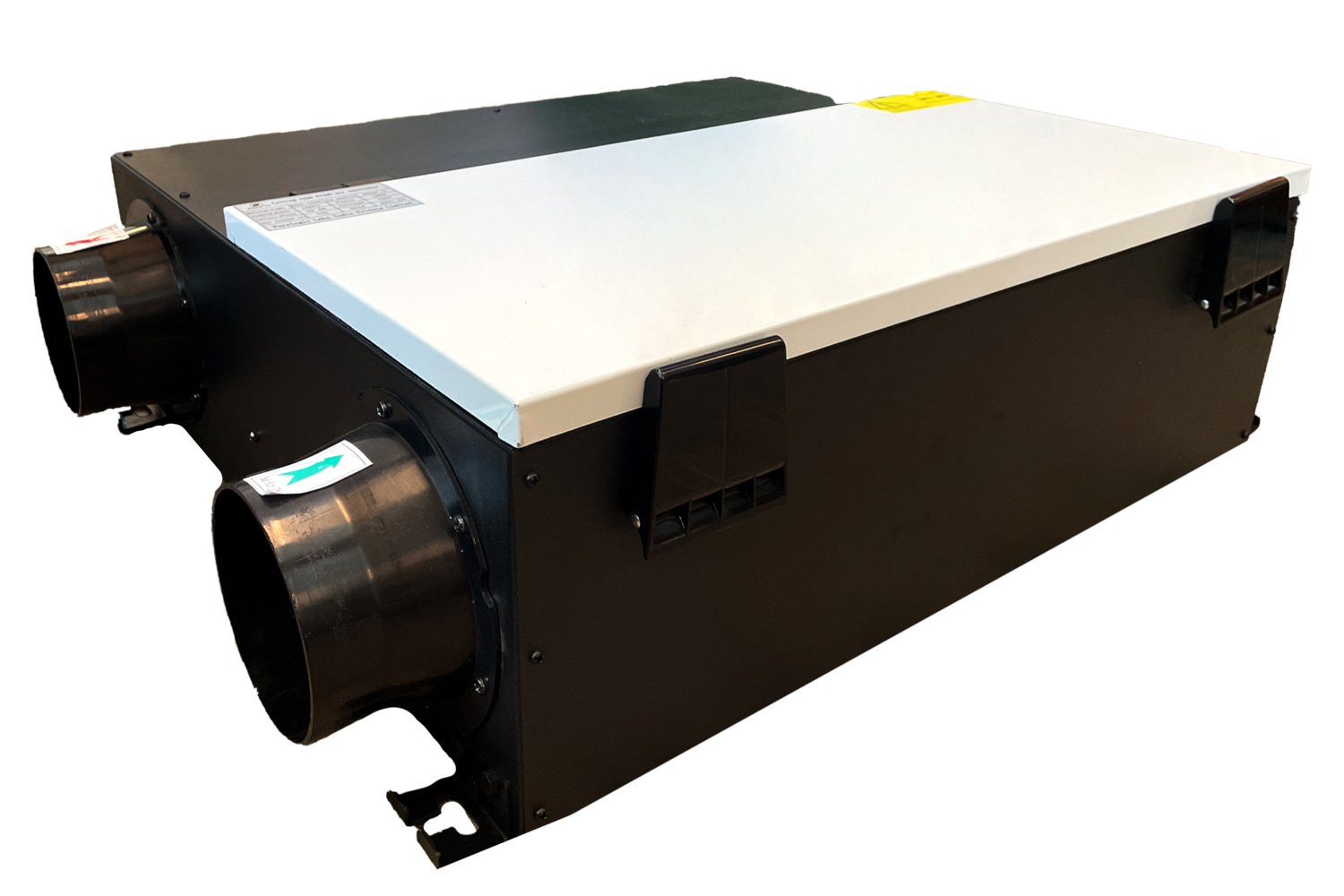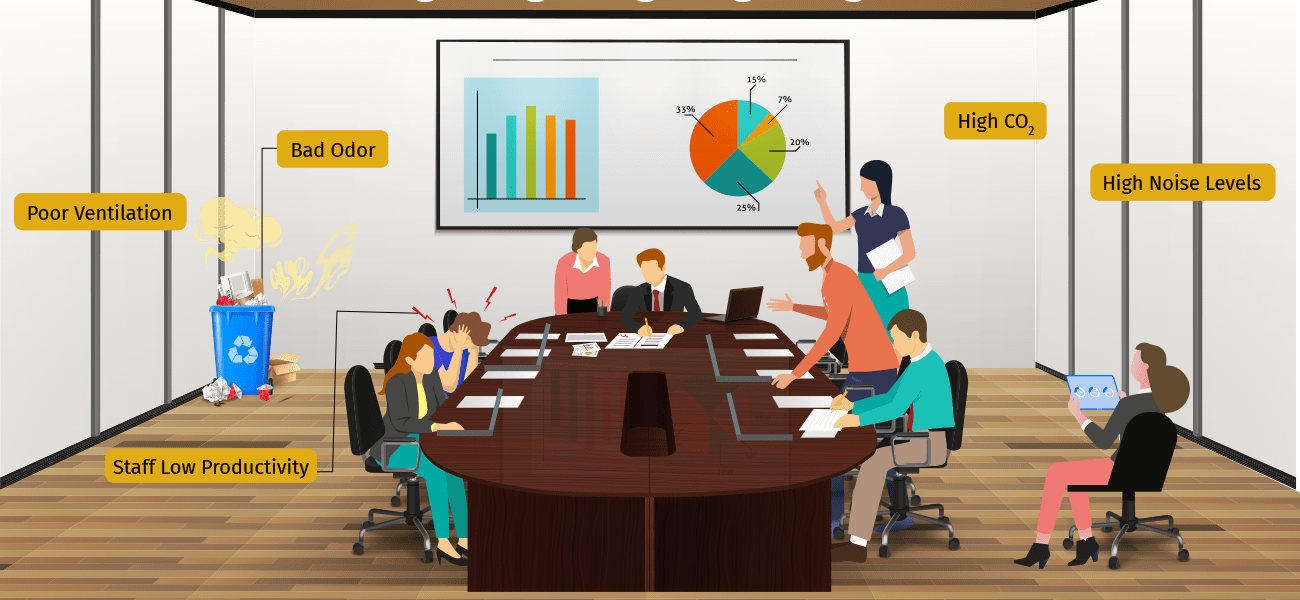
Occupational health is social, emotional and biological well-being of a worker in the workplace. Any potent contaminant present at workplace that can affect the health of employee/ worker leads to occupational hazards. Occupational hazards are of mainly of three types: physical, chemical and biological.
The air quality in closed spaces like schools, offices, workplaces, etc. is crucial for the comfort and health of the workers. Poor IAQ causes headaches, eyes, nose, throat irritation, irritation in airways, fatigue, reduced productivity, etc. Problems such as sick building syndrome, asthma, COPD (Chronic Obstructive Pulmonary Syndrome), confusion, and anxiety are also associated with poor indoor air quality.
Air Quality Problems & Occupational Health
Poor ventilation, dust, bad odor, humidity, inadequate temperature, light, and noise affect Indoor Air Quality (IAQ), and interfere with the comfort of occupants. Other than this, the presence of any microorganism, heavy metal, or chemical can also affect the well-being of occupants. The occupants suffer from symptoms like headache, eyes, nose & throat irritation, inflammation & irritation in airways, nausea, itching, drowsiness, irregular breathing, etc. One common Building Related Illness (BRI) is Legionnaires, which is caused by bacteria that can contaminate the Air Conditioning system in the building.
Other than this, effects such as anxiety, irritability, anger, depression, problems related to Gastro- Intestinal tract, muscle disorder, psychological tension, lung and heart diseases, dementia at an early age, type-2 diabetes, and infertility are also seen. People with asthma, allergies, suppressed immune systems, respiratory disease, etc. are easily affected by indoor air pollutants.
The potential for both short and long-term problems related to health might increase with indoor air pollution. Along with this, it can negatively impact workers’ attendance, comfort, performance, and productivity.
Dust (Particulate Matter):
A mixture of liquid droplets and solid particles makes particulate matter. The size of particles can range from 1-10 microns (PM1, PM2.5, PM10) and penetration into respiratory systems depends on the size of particles. The safe level of exposure ranges from 0-25 ug/m3 for PM 2.5 and 0-100 ug/m3 for PM 10 according to ISHRAE.
Poor Ventilation:
More the number of occupants, the poorer the ventilation is. People release carbon dioxide during respiration and CO2 levels of more than 400 ppm in an indoors affect occupants’ productivity, decision-making ability, comfort, and health.
HCHO:
A colorless gas with a strong smell is released from wooden products such as tables, boards, plywoods, chairs, stools, etc. at the time of construction or renovations.
Odor (tVOCs):
It is an odor regulator in an indoor environment. It is released from aerosols, paints, sprays, glues, etc.
Cigarette Smoking:
Cigarette smoking indoors increases the concentration of carbon monoxide and carbon dioxide which impacts the health of occupants.
Ozone:
It is released from photocopiers, solvents that are used to make cleaners, glues, etc.
Light (Lux):
The inadequate intensity of light can lead to physical hazards in the workplace. Too much or too dim light affects the vision of occupants which further can result in accidents.
Thermal:
The ideal temperature at work is 20-24 degrees Celsius. Too much heat or too cold temperature affects the working ability of workers.
Acoustic:
The levels of noise and hearing aid are related to one another. The area that has high noise levels to which occupants are exposed for a longer duration as a part of their occupation experience hearing aids, confusion in understanding, and even deafness. Hence, it is necessary to monitor the noise levels at the workplace.
Air Quality Solutions For Oil & Gas Industry
Air Quality Monitor
Monitors are made with special sensors based on different technologies that ease the monitoring of pollutants in an indoor environment. These monitors are cost-effective, portable, and communicate real-time air quality data.
Fresh Air Machine
The machine is made with a carbon layer and HEPA filters to filter out the pollutants. The machine regulates the fresh air indoors. 200 m3/h is the CADR for formaldehyde and Particulate Matter (PM). The filtration is 99.05% whereas the coverage area is 24-41 m2.
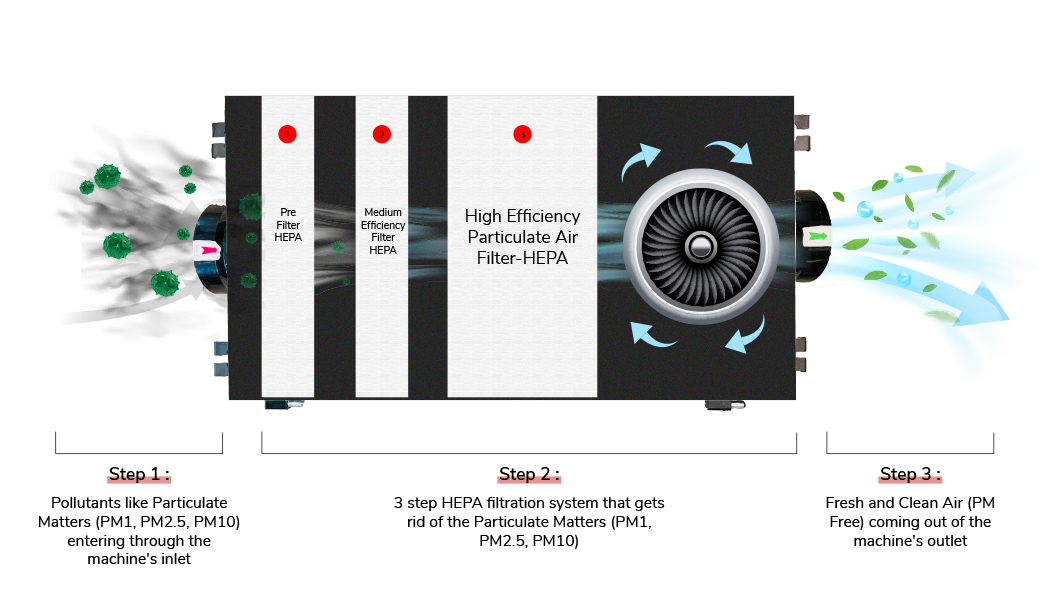
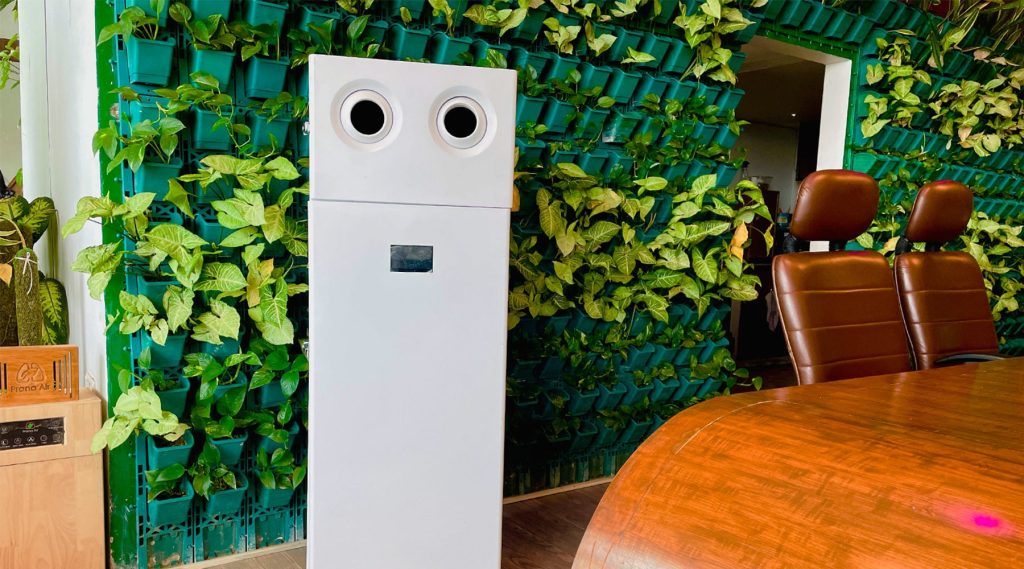

Get In Touch With Us
Contact us for more details about the air quality solutions.
Drop a message

